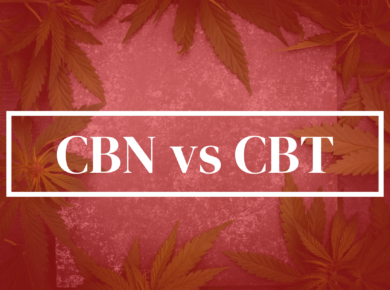THC (Delta 9-THC) and CBDa (Cannabidiolic Acid) are two cannabinoids that have garnered significant attention in the world of cannabis. Understanding the differences between these two compounds is crucial for anyone diving into cannabinoid products.
Delta 9-THC, more commonly known as THC, is the principal psychoactive compound in cannabis. It’s the main culprit behind the euphoric sensation or the ‘high’ typically associated with cannabis consumption. This effect is attributed to its ability to bind directly with the CB1 receptors in our brain, a part of the body’s endocannabinoid system.
On the flip side, CBDa, standing for Cannabidiolic Acid, is a non-psychoactive cannabinoid prevalent in raw cannabis plants. This compound is the direct precursor to the more well-known CBD (Cannabidiol). The transformation from CBDa to CBD happens through decarboxylation, usually induced by heating or aging. Unlike its counterpart THC, CBDa does not bind with CB1 or CB2 receptors. Instead, it influences other receptors, affecting certain chemical and enzyme levels.
In a nutshell, while THC offers psychoactive effects and interacts directly with CB1 receptors, CBDa is non-psychoactive and has a different interaction mechanism within the body.
Many States allow hemp derived cannabinoids under the 2018 Farm Bill as long as they contain less than .3% D9 THC. Some States have explicitly banned cannabinoids like Delta 8, so check your local rules and regulations before purchasing.
Here’s the rules for Kush.com and more details
Frequently Asked Questions (FAQs)
- What Are THC and CBDa?
- THC, or Delta-9-Tetrahydrocannabinol, is the psychoactive element in cannabis responsible for the “high” sensation. Conversely, CBDa, or Cannabidiolic Acid, is a non-psychoactive cannabinoid found in unprocessed cannabis plants. It eventually transforms into CBD (Cannabidiol) when subjected to heat or aging.
- How Do THC and CBDa Engage with Our Bodies?
- THC directly binds with the CB1 receptors in the brain, leading to its hallmark psychoactive effects. In contrast, CBDa does not engage with the endocannabinoid system in the same way. It is believed to interact with the COX-2 enzyme, associated with inflammation and pain.
- Do Different Cannabis and Hemp Strains Have Varied THC and CBDa Levels?
- Absolutely! Marijuana strains generally have high THC but low CBDa content. In contrast, hemp strains usually have higher CBDa and lower THC concentrations.
- Is It Possible to Consume THC and CBDa Simultaneously?
- Yes, many products in the market contain a mix of THC and CBDa. However, the effects of these compounds can differ based on their ratios and individual body responses.
- What Occurs to CBDa Upon Heating or Aging?
- CBDa transforms into CBD when subjected to heat or aging through a process called decarboxylation. While raw cannabis plants predominantly contain CBDa, products like oils, edibles, and tinctures usually have CBD, post the heating or aging process.
Shop
- Related Products You Might Find Interesting:




